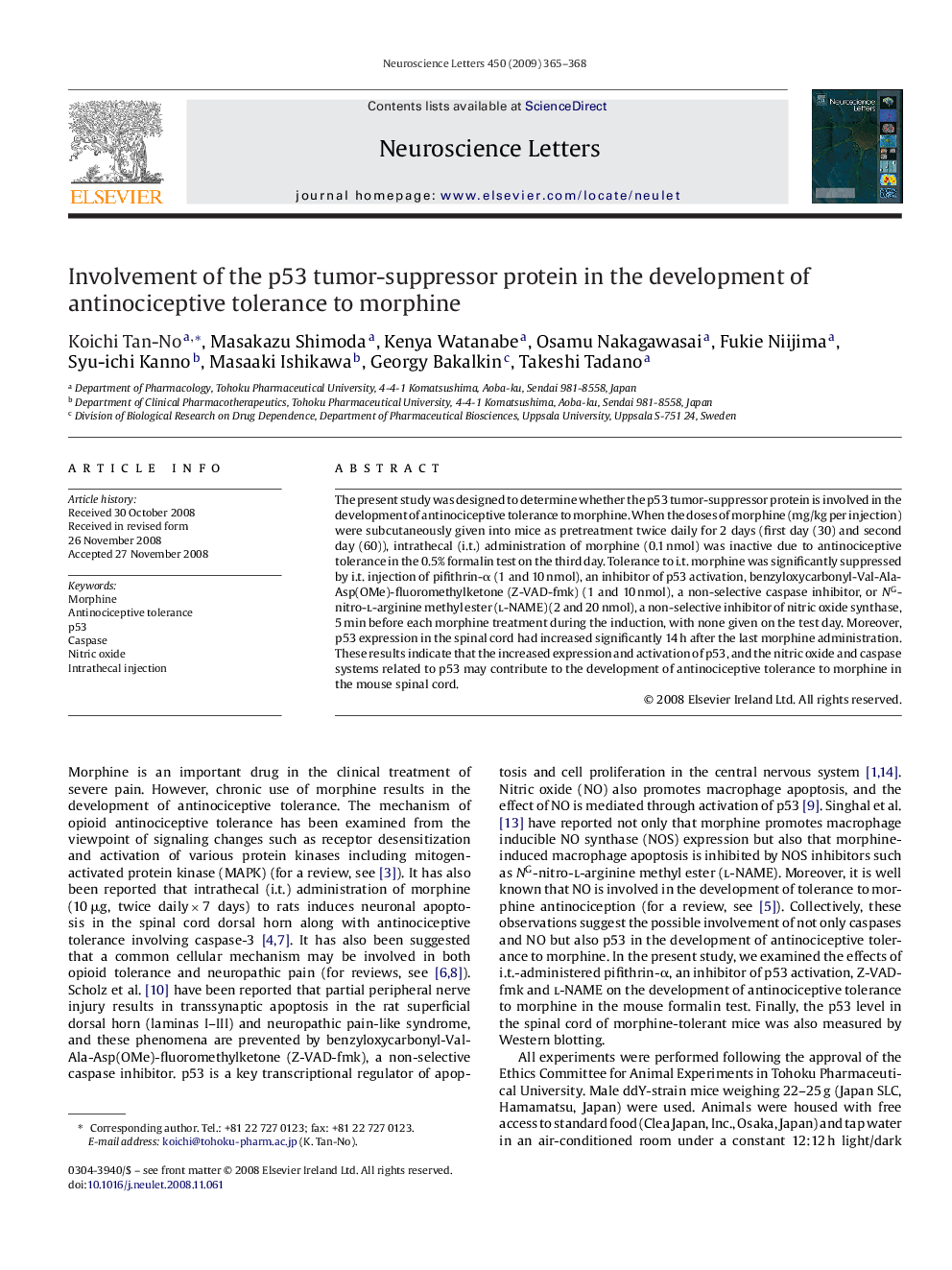| Article ID | Journal | Published Year | Pages | File Type |
|---|---|---|---|---|
| 4347905 | Neuroscience Letters | 2009 | 4 Pages |
Abstract
The present study was designed to determine whether the p53 tumor-suppressor protein is involved in the development of antinociceptive tolerance to morphine. When the doses of morphine (mg/kg per injection) were subcutaneously given into mice as pretreatment twice daily for 2 days (first day (30) and second day (60)), intrathecal (i.t.) administration of morphine (0.1 nmol) was inactive due to antinociceptive tolerance in the 0.5% formalin test on the third day. Tolerance to i.t. morphine was significantly suppressed by i.t. injection of pifithrin-α (1 and 10 nmol), an inhibitor of p53 activation, benzyloxycarbonyl-Val-Ala-Asp(OMe)-fluoromethylketone (Z-VAD-fmk) (1 and 10 nmol), a non-selective caspase inhibitor, or NG-nitro-l-arginine methyl ester (l-NAME) (2 and 20 nmol), a non-selective inhibitor of nitric oxide synthase, 5 min before each morphine treatment during the induction, with none given on the test day. Moreover, p53 expression in the spinal cord had increased significantly 14 h after the last morphine administration. These results indicate that the increased expression and activation of p53, and the nitric oxide and caspase systems related to p53 may contribute to the development of antinociceptive tolerance to morphine in the mouse spinal cord.
Related Topics
Life Sciences
Neuroscience
Neuroscience (General)
Authors
Koichi Tan-No, Masakazu Shimoda, Kenya Watanabe, Osamu Nakagawasai, Fukie Niijima, Syu-ichi Kanno, Masaaki Ishikawa, Georgy Bakalkin, Takeshi Tadano,
